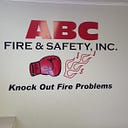Fire Safety Regulations: Understanding Compliance Requirements
Introduction:
Fire safety regulations play a crucial role in safeguarding lives and property by establishing standards and guidelines for fire prevention, detection, and suppression. Understanding and complying with these regulations are essential responsibilities for property owners, facility managers, and occupants alike. In this article, we will delve into the importance of fire safety regulations, the key compliance requirements, and the implications of non-compliance, without mentioning specific company names, brands, or local details.
Importance of Fire Safety Regulations:
Fire safety regulations are designed to mitigate the risk of fires and minimize their impact when they occur. They encompass a wide range of measures, including building codes, occupancy requirements, fire alarm systems, emergency evacuation procedures, and fire suppression systems. By adhering to these regulations, property owners and managers can create safer environments for occupants, reduce the likelihood of fire-related injuries and fatalities, and protect property from damage.
Regulatory Authorities:
Fire safety regulations are typically enforced by regulatory authorities at the local, state, and national levels. These authorities may include fire departments, building code officials, occupational safety agencies, and insurance companies. Their primary role is to ensure that buildings and facilities comply with applicable codes, standards, and ordinances to minimize fire risks and promote public safety.
Building Codes and Standards:
Building codes establish minimum requirements for the design, construction, and occupancy of buildings to protect against fire hazards. They address various aspects of fire safety, such as structural integrity, fire resistance, means of egress, fire detection and alarm systems, and fire suppression equipment. Compliance with building codes is mandatory for new construction, renovations, and alterations to existing structures.
Occupancy Requirements:
Fire safety regulations often include specific requirements based on the type of occupancy and the level of fire risk associated with the building’s use. For example, high-rise buildings, healthcare facilities, schools, and industrial plants may have unique fire safety requirements tailored to their specific hazards and occupancy loads. Compliance with occupancy requirements ensures that appropriate fire protection measures are in place to mitigate potential risks.
Fire Alarm Systems:
Fire alarm systems are essential components of fire safety regulations, providing early detection of fire incidents and alerting occupants to evacuate safely. Regulations specify the type, placement, and operation of fire alarm devices, including smoke detectors, heat detectors, manual pull stations, and notification appliances. Regular testing, inspection, and maintenance of fire alarm systems are required to ensure their reliability and effectiveness.
Fire Suppression Systems:
Fire suppression systems, such as sprinkler systems, fire extinguishers, and specialized suppression systems, are mandated by fire safety regulations to control and extinguish fires quickly. Regulations dictate the type, design, installation, and maintenance requirements for these systems based on factors such as occupancy classification, fire hazards, and building size. Compliance with fire suppression regulations is critical to ensure the systems function as intended during a fire emergency.
Emergency Evacuation Procedures:
Fire safety regulations also address emergency evacuation procedures to facilitate the safe and orderly evacuation of occupants during a fire or other emergency. Regulations may require the development and implementation of evacuation plans, the installation of exit signs and emergency lighting, and the designation of evacuation routes and assembly areas. Regular drills and training exercises are essential to familiarize occupants with evacuation procedures and promote swift evacuation in an emergency.
Implications of Non-Compliance:
Non-compliance with fire safety regulations can have serious consequences, including fines, penalties, legal liabilities, and increased insurance premiums. More importantly, non-compliance puts lives at risk and exposes occupants to the dangers of fire-related injuries, fatalities, and property damage. Property owners and managers must prioritize compliance with fire safety regulations to protect the safety and well-being of occupants and avoid the potential consequences of non-compliance.
Conclusion:
In conclusion, fire safety are essential for protecting lives and property from the devastating effects of fires. Compliance with these regulations is a fundamental responsibility for property owners, facility managers, and occupants to ensure the safety and security of buildings and facilities. By understanding the importance of fire safety regulations, adhering to compliance requirements, and implementing robust fire protection measures, stakeholders can create safer environments and minimize the risk of fire-related emergencies.
